Prop Crankshaft Seal Replacement
Completed 8/20/2011This is one of those jobs that I wasn't hoping to have to do, but yet I had to do something. I've had a couple of leaks develop in the last year. One of them was the plug gasket just behind the prop hub, for the governor shaft. It was no big deal at all...just a simple one of those copper crush gaskets that had finally become not-snug-enough...and I replaced it with a fiber gasket with a part number from the parts manual. It was causing a drip down the front gear leg when parked.
Then if you look at the nut in the middle top row photo below, it's a thru the case bolt. It was either that nut or one above it out of the picture that started leaking next. I took the nut off and saw that there's no washer at all other than the regular metal washer...I guess they don't call for them either. Strange, but oil can leak out of there. So, I used some anaerobic sealant and fixed that one. With that done, I thought I was home free and would have no more oil drip mess on my air box and lower cowl....well, close, but not done.
After all of the above, when I'd fly, I saw just a couple dozen of the very very faintest oil streaks on the windscreen, only on the right side. It was as if a tiny pinprick dot of oil had hit the windshield and flowed upwards. Not enough that you notice it on oil consumption. Not enough that it drips in the cowl. Not enough that you can hardly even SEE it unless you're in the right lighting....but it's there.
With nowhere left to turn for the time being, I figured it just HAD to be the prop shaft seal. I'd replaced one before on a different plane, so it wasn't totally foreign to me. On that plane I had used a product in a small white can called Permatex 80017 Aviation Form-a-Gasket #3 sealant (supplied by my A&P working with me at the time). This time around in my research I found that the stuff to use is Pliobond 20, available at Aircraft Spruce among other places. It provides a real fast setup time too.
So I headed out with my copy of Service Instruction SI-1324c to the hangar and started work. I pulled the prop, then had to pull my Lightspeed ignition pickup ring, to get clear access to that area. You can see some slight seepage along the case center line from the leak. Funny thing is, my ring gear and associated parts were dry as can be, with no oil on them. So, although it was leaking there wasn't much getting flung around. The seal that popped out was a split seal variety. I had obtained from Aerosport (free) 2 new seals, both the split and solid round style. On the old plane I did the solid seal. I decided to give that a try again. Installing the seal is a bit like giving birth, in the amount of stretching that seal takes! I removed the spring, heated the seal in boiling water, greased the seal a little, used some rounded edge non-sharp instruments and a pin to hold the seal while I stretched it over the hub, and then reinstalled the spring in the seal. After a bit of cleanup to get rid of the oil/grease from lubing the seal, I was able to apply the pliobon with q-tips and then stick the seal in the bore. The job took maybe 4-5 hours I suppose. The old seal, pictured below, had dozens of cracks around the inner lips of the seal. It was easy to see that it had hardened somewhat over time. That was the good part...I was glad to see that the old seal was not perfect, because I didn't want to do the job for nothing.
At present, I've put about 18 hours on since then and while the oil up the windscreen isn't 100% gone, it seems to be drastically reduced. In 4 hours I may get just a fraction of what I did before, and even that was light. I'm still not sure if it's licked, but there may be some additional oil trapped in nooks and crannies that is still working it's way out. Prior to this work, I was able to look at the cowl, just adjacent to the upper inside corner of the right intake, and see that in the spinner gap was where the oil was coming from. This seems to indicate that it has to be from the prop area, one way or the other. I'll be doing an oil change soon now and will give a good inspection and if I note anything new I'll add it to this write-up.
Oh, and while I had the prop off, there's a ton of grey sludge that builds up in the inside of the crankshaft and prop hub...I was able to once again clean all that out. It builds up enough that it may be working checking every 500-1000 hours to clean out.
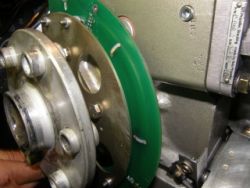 |
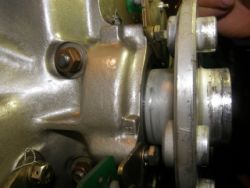 |
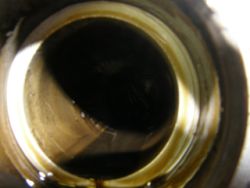 |
 |
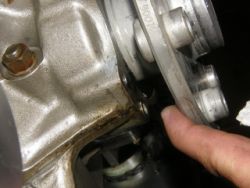 |
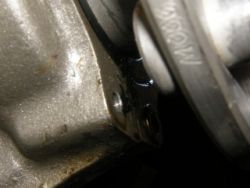 |
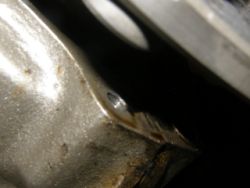 |
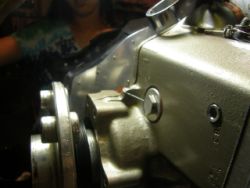 |
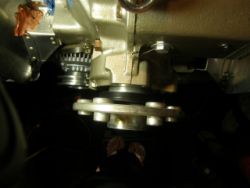 |
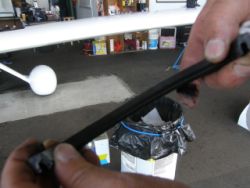 |
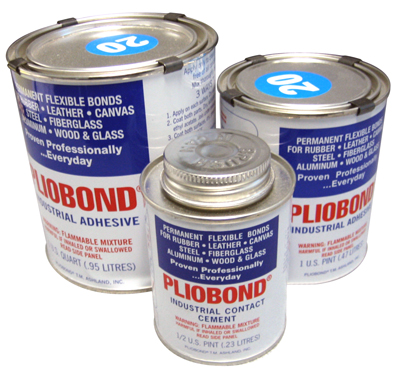 |